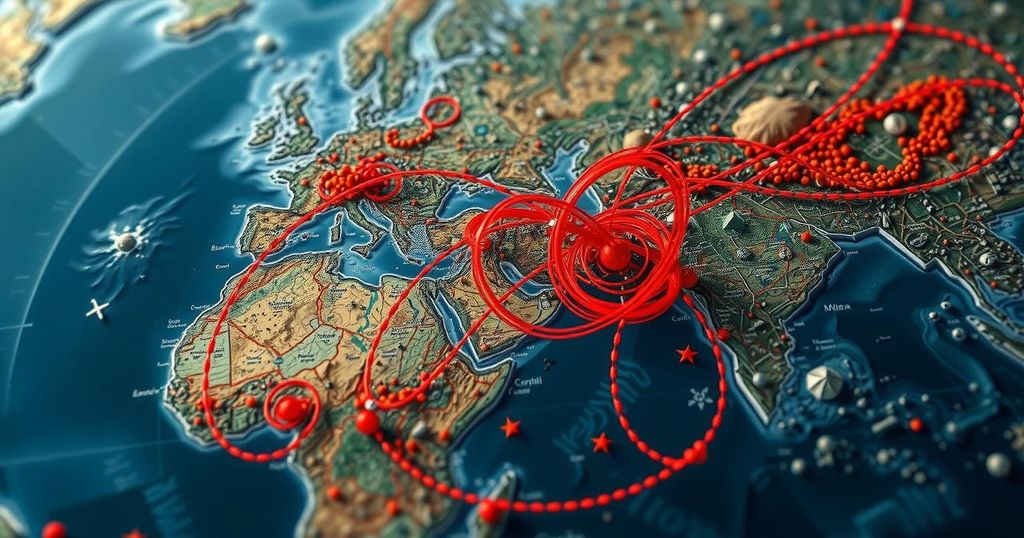A 6.8-magnitude earthquake struck Cuba on November 11, confirmed by the USGS. The tremor, centered near Bartolomé, was followed by several significant earthquakes around South America, including in Chile and Peru, highlighting a recent increase in seismic activity in multiple regions.
On November 11, a significant earthquake registering 6.8 on the Richter scale struck Cuba, as confirmed by the United States Geological Survey (USGS). The earthquake originated near Bartolomé and occurred at a depth of 14 kilometers (approximately 8.7 miles). At the time of the report, there were 117 accounts from individuals who experienced the tremor. This seismic activity followed a series of earthquakes in South America, highlighting a notable period of geological instability in the region. Prior to the Cuba quake, a smaller earthquake measuring 6.2 magnitude occurred in Chile on November 8, with its epicenter pinpointed in Cochrane at a depth of 10 kilometers (about 6.2 miles). This was not an isolated incident, as a 5.0-magnitude earthquake had been reported in Peru on November 7. The Peru quake was centered in Changuillo and occurred at a depth of 54.8 kilometers (approximately 34 miles). Additionally, on the same day as the Peru quake, California experienced a 4.4-magnitude earthquake centered in Borrego Springs at a depth of 9.8 kilometers (about six miles). Two days earlier, Greece reported a 4.4-magnitude earthquake near Chalandrítsa at a depth of 82.3 kilometers (approximately 51.1 miles).. Furthermore, an earthquake measuring 4.8 occurred in Hawaii, shortly following the Greece tremor, with its center located in Pāhala at a depth of 38.4 kilometers (about 23.9 miles). Earlier in the week, a 3.3-magnitude earthquake was reported in California on November 4, originating in Anza at a depth of 12.1 kilometers (approximately 7.5 miles). This sequence of earthquakes indicates a concerning pattern of seismic events across multiple regions within a short timeframe.
Earthquakes are complex geological phenomena resulting from the movement of tectonic plates beneath the Earth’s surface. They can have varying magnitudes and depths, influencing how strongly they are felt by the population and the potential for damage. The recorded magnitudes of these recent earthquakes in Cuba, Chile, Peru, Greece, California, and Hawaii exemplify the dynamic nature of Earth’s crust and the ongoing geological processes that lead to such tremors. Seismologists continuously monitor these activities to understand their patterns and provide timely information to the public.
The recent series of earthquakes, culminating in a significant 6.8-magnitude tremor in Cuba, underscores the dynamic and often unpredictable nature of seismic activity across different regions. This phenomenon is not isolated; it is part of a broader series of earthquakes occurring throughout South America and beyond, including notable seismic events in California and Hawaii. Continued monitoring and research by the United States Geological Survey and other geological authorities remain essential for public safety and awareness.
Original Source: whoradio.iheart.com






